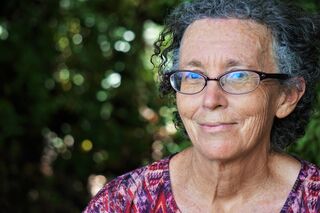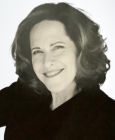Aging
The New "Old"
"Old" is in the age of the beholder.
Posted September 6, 2021 Reviewed by Davia Sills
Key points
- The new longevity is changing the nature of "old."
- Our unconscious fears and beliefs about it have not caught up to reality.
- There are many diverse individual and cultural influences on how we age.
- Today we each have the opportunity to reimagine late life for ourselves—from the inside out.

I spoke with a woman friend while writing this page. At 89, she told me, “I walked six miles today. The Fitbit said that I did my steps.”
“How did you feel?” I asked.
“Tired,” she replied. “But then Bill wanted to have sex. So, I did that too.”
Grinning, I thought to myself, “This is not my mother’s old age!”
For some of us, an extended health span is catching up to an extended life span.
In the past, this was not the case: Many years of decline, with chronic illness and loss of capacities, preceded the end of life. But today, many of us Boomers experience decades of good health extending into late life, with a sudden decline before death.
So, our fearful images of age—slow drivers who shouldn’t be behind the wheel; those suffering from dementia who are left behind in nursing homes; afflicted shoppers pushing their walkers through the grocery store—stem from stereotypes that mask another kind of aging that’s happening all around us. A 95-year-old Finnish woman set the record for the world’s oldest woman to complete a 500-foot bungee jump (Huffington Post, Sept. 2016). A 103-year-old woman was sworn in as a junior ranger at the Grand Canyon in 2019.
But, clearly, this is not everyone’s experience. Late-life is neither the dreaded stereotype nor the rare exception. So, I am not buying into the anti-aging message that is pitched, packaged, and sold to us relentlessly, which idealizes aging while ignoring the suffering of decline. And I am not buying into the decline stereotypes—old people are useless, miserable, and a drain on our resources. That story has led to ageist institutions and a picture of older people as “Other,” an unconscious attribution onto others of what we fear in ourselves—and it serves to increase the suffering of those in late life.
Rather, let’s tell the whole truth—no denial and no romanticizing. As Ram Dass puts it, “Don’t feed the drama or deny it.” In this way, we can move into late life consciously, with eyes and hearts open.
Our quality of late-life is lived individually, not as a group. It can be more than adaptation. It can mean overcoming past fears, developing fresh aptitudes, cleaning up toxic relationships, living more in the present moment, and transcending the ego, allowing it to take a backseat so that life opens to an intuitive flow. It can be a time of mining the gold from the dark side, reclaiming unfulfilled dreams, and expressing unrealized talents.
But it also can be lonely, frightening, vulnerable, uncertain, and disorienting, especially now, in the time of the Virus. And this is especially the case for those without a guide, financial resources, or a contemplative practice.
Late-life is defined and confined by many forces.
Certainly, there are genetic predispositions and variations that affect aging. So, our bodies and their health, our illness, and our resilience define and confine aging. In a study by Humana, older people with fewer unhealthy days per month reported more optimism about the future than those who had more unhealthy days.
While mortality rates for other diseases are declining, there is still no effective treatment for Alzheimer’s disease. In addition, there are six to eight million of us over 65 who have a mental health or substance abuse disorder. And many elders are over-medicated with prescriptions, making self-reflection more difficult.
Those of us who have financial resources and a felt sense of affluence also will have “time affluence”; however, for those who struggle with survival needs, developmental needs seem like a luxury. So, class differences inform our experience of late-life, and racial differences do too.
There are conscious and unconscious attitudes that support or undermine healing and resilience, which define and confine aging. For example, if our identity is rooted in our image, we may struggle to adjust to the incremental changes that occur in our appearance, losing confidence and motivation. Jackie told me that her wrinkles are a curse. “I never liked my body,” she said. “But over the years, I had come to accept my shape, even though it doesn’t look anything like supermodels. But now—those hideous wrinkles. They just brought back all of those feelings of self-hate.”
My friend’s lifelong negative gaze onto her own body had moved to her aging face, which she judged and rejected. When I pointed out that an inner part of her was buying into an ageist prejudice, which compared her face to a youthful ideal, Jackie looked startled. “I just assumed everyone saw it that way. Old is ugly,” she replied.
There is a resistance rising to that equation: The glorious grandmas of Instagram are modeling underwear, swimwear, and colorful, high-style clothing in unfettered self-expression, their silver hair shining in the sunlight. Dorrie Jacobson, 83, former Playboy bunny, great-grandma, has redesigned herself as a style blogger and has 35,000 followers. Baddie Winkle, 89, in tie-dye and face paint, has millions of followers. Their chant: Age no longer dictates the way we live.
Others, whose identity is rooted in a role at work or in financial status, may have more difficulty maintaining self-esteem as those sources of identity change. One man told me, “Who am I if I’m not a psychologist, helping others all day?” Another said, “I built this company from the ground up—and now they want me out. What is the meaning of my life without my company?”
People who have explored their own psychologies and come to understand themselves deeply may have a different experience. They may know what triggers their anxiety, what they need if depression arises, and how to ask for support. They may be better able to tolerate loss and uncertainty, and their emotional resilience may give them more flexibility to adapt to the changes that occur with aging.
Extroverts and introverts will age differently, too. The former will tend to move toward more interaction through service, community work, family, and social relationships. They gain energy in groups and feel more purposeful in stable marriages and family intimacy. Introverts will tend to move toward more quiet settings where solitary time and inner work can be done. This helps them to conserve energy and tap into internal resources.
Our religious and spiritual beliefs and experiences also define and confine aging. For members of organized religions, church and synagogue communities can be a source of social support and a venue to serve others. The clergy can confirm their faith and provide ritual space for transitions. But most churches and synagogues, which welcome youth, provide no rituals to celebrate seniors becoming elders. And, of course, the exoteric or public forms of these traditions offer no spiritual practices to gain access to mystical states or higher stages of development.
For those of us who have taken a more individual path as unaffiliated seekers, our practices have become essential. During the interviews for my book, I found people using a wide range of contemplative techniques for centering, quieting the mind, releasing the noise of the day, and opening to a deeper source. But in each case, meditation was a refuge and a buffer against the losses and disorientation of age.
Our cultures also define and confine aging.
We age in contexts, such as families, communities, groups, nations, which communicate possibilities and limits about everything, including age. So, they shape what goes into the shadow and remains unexpressed, as well as what is consciously lived out and fully expressed in our late life.
For example, the movement for “positive” or “successful aging” emerged a decade ago to counter the consequences of long-term negative views of “old.” Proponents urged those over 50 to maintain productivity, engagement, contribution, physical and mental health, sexuality, and autonomy. It’s an ideal that’s appealing and increasingly possible for many of us for decades. And it’s correlated with high degrees of life satisfaction.
However, ideals about how to age can quickly become “shoulds” and create unconscious images in us, like stock photos in the recesses of our minds: the attractive, 65+ White couple walking on the beach; the well-dressed 70+ White woman who makes a commercial for sex products.
These ideals and images obscure the complex, diverse, idiosyncratic reality of aging. What if the viewer cannot see him or herself in these successful agers? What if she or he is a person of color, gay, disabled, or poor?
Also, many of these “shoulds” are not accessible to people without financial resources, health care access, or social support. Clearly, they will see themselves as failing to age well against these standards.
Finally, cultural messaging about successful aging reinforces an outer orientation over an inner one and, as a result, more ego reinforcement. I suggest, instead, that aging from the inside out requires a shift from productivity to contemplation, from money to meaning, from role to soul. In effect, late-life compels inner development and connecting to something larger than ourselves, not more empire-building.
The full truth of age is that most of us experience a quality of youthfulness or even changelessness beneath the many physical, emotional, cognitive, and social diminishments of late-life. Many of us continue to be productive, however we define it, throughout our 70s or later. Others choose to slow down, change gears, and turn toward a more private life of grand-parenting, creativity, and spirituality. And, at some point, we all grapple with various kinds of loss of control in the face of larger forces.
At that time, whether it’s in our 60s, 70s, 80s, or 90s, we don’t want to be measured against the cultural expectations of agency, independent self-control, or productivity. We don’t want to be compared to the standards of other stages of life. Rather, we need to align with change and deepen our self-acceptance to create the life that reflects who we are now.
To try to encapsulate “old” in a three-letter word simply reduces it. All the nuance is lost in the naming. The Latin root of “old,” alere, means nourish. Somehow, in our post-modern, youth-oriented society, the precious, ancient meaning of old, whether nourished or nourishing, has vanished. My prayer would be that elders are both.
This post was adapted from The Inner Work of Age: Shifting from Role to Soul.




